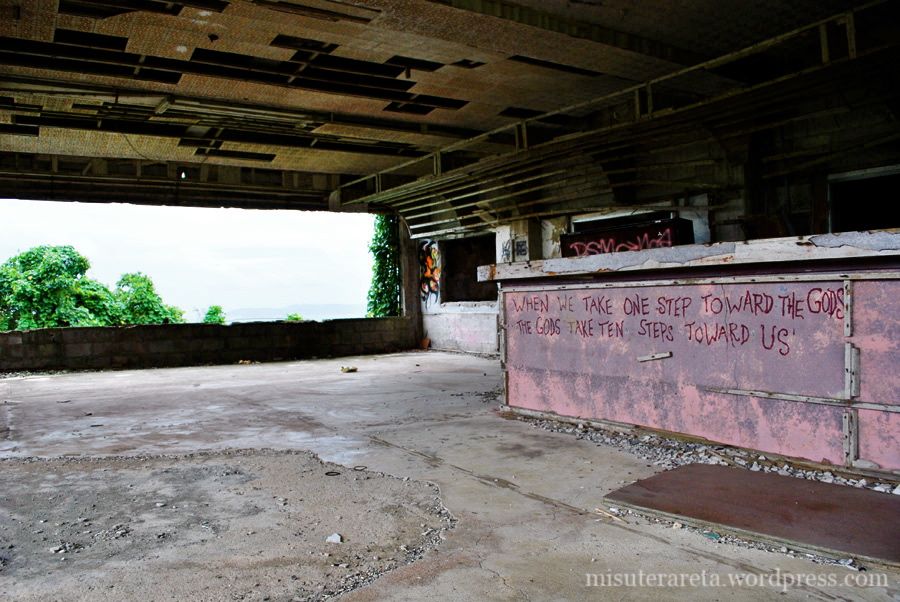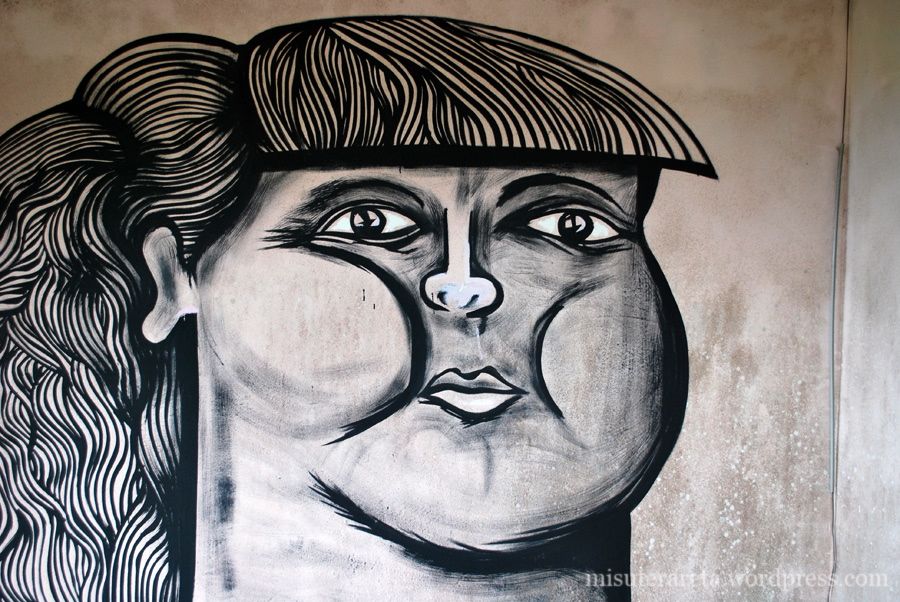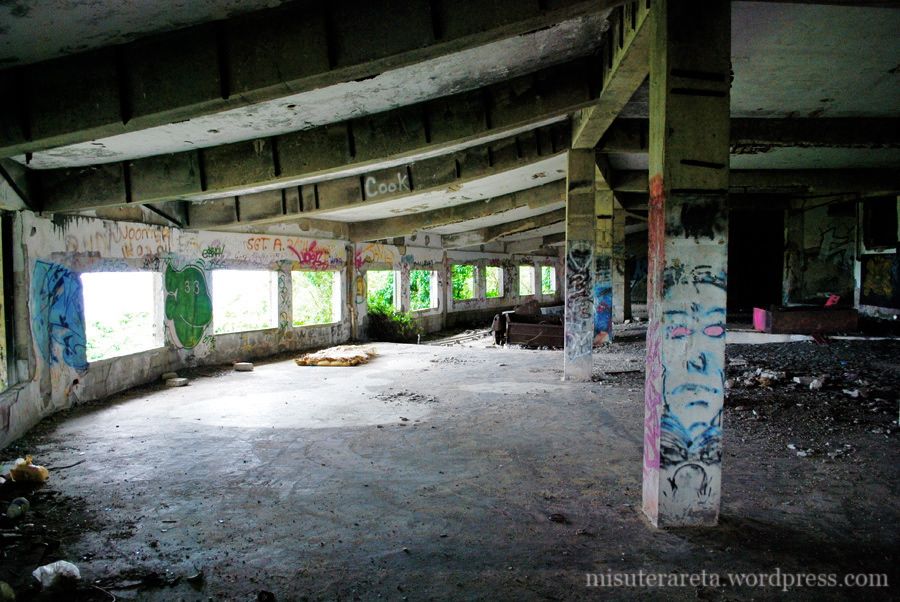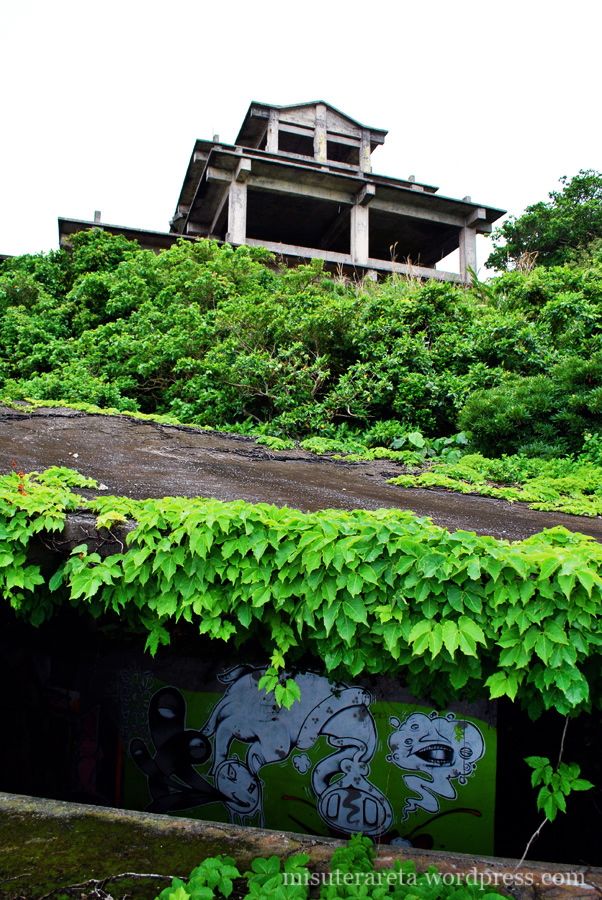This is the third part of Paul’s Okinawa explorations, see part one (abandoned cactus theme parks) here, and part two (the Rekio hotel) here.
Day Three
Along with Sports World the Nakagusuku Kogen Hotel is one of only a handful of ruins in Japan on the scale of a small village. Such is its grand positioning on the hillside the hotel can be seen from literally miles away … my first response upon seeing the ruin, something along the lines of: “Woah!” Originally scheduled for opening to coincide with the World Fair Expo ’75, construction of the hotel was never actually fully completed. The conglomeration of construction companies in charge went bankrupt shortly before the Expo, and despite numerous talks to organise its demolition, it survives to this day. The ruin is well known throughout Okinawa, and has been used in tv shows and music videos, such as Miyuki Nakajima’s single Taka Ga Ai (See it here)
At the entrance there’s no security or even a fence to keep intruders out. I didn’t pay much attention to it at the time, but there was a white sign in Japanese. My wife translated it later, saying it was a message from the owners of the land detailing the difficulties the hotel project faced. And it even went so far as to name the officials one by one who were to blame for the state it had fallen into. The ruin had obviously attracted a fair few foreign visitors in its time. Numerous quotes and ramblings had been scrawled in English throughout the grounds such as “One Step Toward The Gods …”.
Time was again limited for my exploration. All in all I think I saw less than half of the hotel in the hour I spent there. You could easily dedicate a whole book to this ruin … I would recommend my fellow explorers to schedule at least a few hours to see this place properly. And try a find a map.
To get to its grounds you have to go through the ruins of the 15th century Nakagusuku castle. It’s an odd juxtaposition, one ruin next to another.
As is customary there was plenty of weird / schizophrenic graffiti inside. Rom, who had left his huge tag on the Rekio Hotel (on the other side of Okinawa) had a tag here too. More weird graffiti:
The Fat Lady.
The Angry Man.
The Consumer.
Some areas required a bit of climbing to enter, but basically all areas were accessible, one way or another.
This was the first room where I was expecting to find some shady characters lurking around. Luckily there was no-one around (that I noticed) the whole time. There were several pitch-black rooms here I didn’t have the nerve to stick around too long in.
Stacked like a Mayan pyramid (Mike’s comment)
There were several machine rooms to peruse, if that’s your type of thing.
You could attempt to approach the ruin through its surrounding forest, but I wouldn’t recommend it. The trees have overgrown to a point where even the highest part of the ruin is completely blocked from sight most of the time. I found this out the hard way, getting thoroughly lost in the maze-like forest looking for the main building.
Climbing out on the roofs the buildings on each level offered great views of the surrounding area. Strong winds however, offered to push me off the edge – no thanks.
The uppermost building had been stripped bare of everything but its most basic structure. There were a lot of steps of climb to reach the top. Each level had it’s own message to try and freak you out: ‘DON’T GO’, ‘YOU’RE NOT ALONE’.
Sleep all day, play all night.
It felt almost appropriate for somebody or some nasty surprise to be waiting for me at the top. Not a soul. Not even a Vampire.
I took a different route out of the complex, dashing and shooting some of the other buildings I didn’t have time to see the first time. If I can I’d like to come back here some day. There’s plenty more to see and discover at the Nakagusuku Hotel.
Credit for the ruin: Nippon no Haiko author Ryuji Sakai and the Japanese Haikyo community.
See alternative takes from Japanese explorers on the ruin here and here.
To find out more about Paul’s haikyo adventures go to his Misuterareta site, or see all the photos from this explore in his article here. Thanks Paul!
See more Japanese ruins (haikyo) in the galleries:
[album id=4 template=compact]You can also see a curation of world ruins in the ruins gallery.
















Comments 4
Another excellent piece. I love how you tell a backstory and brief history of the places you visit. Always fascinated by your insightful descriptions and photos.Thank you =)
Hi MJG, I’ve discovered your blog this week, and I’ve passed these last days devouring every single haikyo page. I loved it.
I really like how you describe the places, write their stories, and add your emotions. Furthermore, being I a photography enthusiast, I also liked seeing how your skills (end equipment of course) evolved during these years. I like the way you use HDR to give us a better view of the darkest places (even though sometimes, when exasperated, it gives them a too unnatural look for me – eg: The White Root mine set or the opening photo of the Strip Club set – but it’s just my opinion 😉 )
I liked every place you visited, but I’m sure that my favourite one is the Sports World. You’ve described it amazingly well, it was just like being there with you, especially when you went the first time, on your own, and you slept there. Then I was fascinated by the Sanyo vault, with its big doors, there in the countryside… And how could i forget that phone in Nichitsu, still alive after all those years of abandonment? I’m enchanted.
Your blog has been definitely added to my bookmarks list. I can’t wait to read (and look at an) another one of your reports.
Hugs from Italy.
Andrea
Sir you are so lucky to be able and go to these places, but then thanks to you and your pics. we can also enjoy these wonderful pics. and travel with you in our minds. Thanks for everything you do, keep up the great work.
Wow theses are absolutely awesome pictures…dont know why but they totally inspire me..the kind of hidden humanness and how everything is absorbed back to the earth. have you been to Mozambique ?